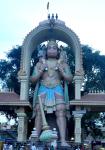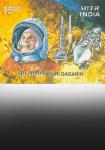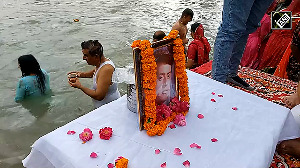The sympathetic play about divergent cultures and faiths was done in an ecumenical spirit, she says.
Playwright Donna Ziegenhorn, who interviewed scores of Kansas City residents, put their stories together to reflect on division and the lesson of tolerance.
'We are divided as people by lines... culture, religion, race, gender, to some extent,' she said. 'The underlying question running throughout the play is are these lines good or are they bad?'
These are very questions that the Pluralism Project that Diana Eck started at Harvard University has been asking since 1991. Of course, like Ziegenhorn, Eck and others at Pluralism Project believe in multi-ethnic and multi-religious America.
Eck began the project because she thinks it is important to document the changing religious landscape across America.
Eck, a professor of Comparative Religion and Indian Studies at Harvard Divinity School has been saying for a long time that in a predominantly Christian America, tolerance and goodwill towards people of other faiths is not enough.
'Americans need to practice engagement with other religions, and help them cope with the country's religious diversity,' Eck told about 250 people at the Village Presbyterian Church in Prairie Village near Kansas City recently.
She makes the same point in her celebrated book, A New Religious America: How a 'Christian Country' Has Become the World's Most Religiously Diverse Nation.
Eck, a long time student of Indian religious traditions, has spent about a decade in India, many of those years in Benaras. Her books and articles about India have been widely recognized. Encountering God: A Spiritual Journey From Bozeman to Banaras won the Grawemeyer Book Award in 1995.
Eck, who has lectured extensively on college campuses and in churches about Hinduism, Islam and Buddhism, recently hosted Diwali in Harvard's Lowell House Masters' residence.
The event, organized by Dharma, Harvard's Hindu Students Association, was attended by about 120 people. It was the first time that Diwali was marked in a large hall at Harvard. For Eck and fellow professor Dorothy A. Austin, it was yet another example of engagement with other faiths.
Eck believes as the majority religion starts building the bridges with the minority communities, members of the latter would walk across and start discovering commonalities with the
'Pluralism is not just diversity,' Eck, who is working on the book India: Myth on Earth, has written. 'It's engagement with that diversity. It's not just tolerance, it's a mutual understanding that we need in order to move from tolerance to a society that has a very deep foundation that will support the differences that we will live with in the years ahead.'
Getting to know about other faiths is not always easy, she says. But if one makes an effort, and one reads about the other faiths and listens to people who have been following the faith for a long time, slowly clarity emerges, she feels.
'There are distinct communities that have distinctive languages and they can't all be folded into our language,' she told reporters in Kansas recently.
'When my Hindu or Muslim friends speak of their relationship with God, I can't water that down into Christian language. I need to let the difference of their religious language stand and inform my own, and it becomes a place where both of us are seekers.'
She has been often asked, especially after 9/11 about the future of a multi-religious America. She does not minimize her horror at the incidents of intolerance. But she would rather celebrate the spirit of ecumenism.
'If we lived in Lubbock, Texas, or Savannah, Georgia,' she mused at the Kansas event recently, 'we might be the people who come together to work with our Muslim community in repairing and rebuilding a mosque attacked by vandals.
'If we lived in Portland, Oregon, we might be the people who speak out in disgust when the Christian organizers of a Mayor's Prayer Breakfast dis-invited the Muslim participant,' she added.
And in Kansas, we would be wishing The Hindu and the Cowboy would travel not only across the state but also to other regions in America.
Meanwhile, Pluralism Project whose affiliates continually study the changing religious landscape in America has put together an exhibit, 'Eastern Religions Come to Western Pennsylvania.'
This exhibit, the work of the project's Stuart Chandler, is expected to travel to other museums after being shown in the University Museum of Indiana University of Pennsylvania. It focuses on the Buddhist, Hindu, Jain, and Sikh traditions, especially their practice in the Pittsburgh region.
Included in the show are more than one hundred photographs, according to the project's press release, examples of Hindu, Jain, and Buddhist altars, and artwork by such artists as Arpana Caur, the Singh sisters, and Kaz Tanahashi.
On the web: www.pluralism.org






 © 2025
© 2025